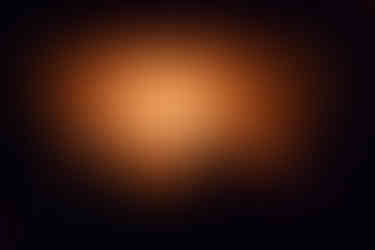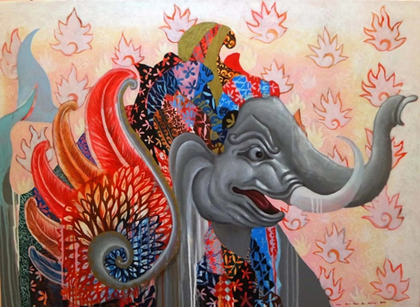The Puri Lukisan Museum: A tour through Bali's rich history of art
- Pia Heckmann
- Jun 23, 2022
- 4 min read
Updated: Jun 24, 2022

Figure 1. The Puri Lukisan Museum in Ubud, Bali. Photo credits: Pia Heckmann
The small island of Bali attracts many tourists over the whole year. But Bali is not only rich in dreamy beaches and beautiful temples. All around the paradise one can find exceptional Indonesian art. Ubud especially is full of a variety of museums and galleries – the Puri Lukisan Museum being one of these. The location of the museum galleries is as Balinese at it gets: the four traditionally built galleries surround a beautiful small park with ponds and palm trees, and Indonesian sculptures adorn little pavilions and flower arcs.
Since the 1920s many Western people have come to Bali – especially western artists searching for inspiration from traditional Balinese art. An exchange of material and style began. Among those foreign artists were Walter Spies from Germany, Miguel Covarrubias from Mexico, and Rudolf Bonnet from the Netherlands. The history of the museum is connected to this exchange. In 1936 the King of Ubud, Tjokorda Gde Agung Sukawati, and his brother, TjokordaGde Raka Sukawati, established the Pita Maha foundation together with Walter Spies and Rudolf Bonnet. Their goal was to promote and support Balinese Art. The Foundation later turned into the Ratna Wharta foundation, which initiated the Puri Lukisan Museum in 1954. Each one of the four galleries shows Balinese Art of a different category.

Figure 2. Entrance to one of the galleries. Photo credits: Pia Heckmann
The first building, the Pita Maha Gallery exhibits paintings from the Pre-War modern traditional Balinese era. The museum calls this particular era of Balinese art Pita Maha – meaning great vitality or strong determination. It started in 1936 when western influences mixed with the traditional art of Bali. Walter Spies and Rudolf Bonnet were the biggest influences.
Pita Maha is separated into three different styles. The Ubud Style consisted of everyday life subjects but within a more Western style. The background is more modern and the figures are depicted realistically, as seen in the ‘The Dagger Dance’. The Batuan Style consisted of scenes from the hidden village Batuan. Paintings from there were not influenced by the West due to its hidden spot. The artists worked with Chinese ink in black and white.

Figure 3. “The Dagger Dance”. Photo credits: Pia Heckmann
The Ida Bagus Made Gallery displays the Collection of Ida Bagus Made, which includes the interesting piece “Atomic War”. This piece revolves around nine male bodies twisted together amidst flames, clouds, and water. The scene originated from the Balinese nawasangacosmic system.

Figure 4. “Atomic War”. Photo credits: Pia Heckmann
In his poem ‘Prakempa’, author Bhagawan Gottama connects sound (suara) with the five elements (panca mahabhuta). Furthermore, the Balinese universe includes atomic particles spreading sound and colour onto earth. The scheme “circular dispersion of tones across the macrocosmos” (lingkaran pengider buana) describes the connection of the eight sounds with the eight directions of the atoms. Emerging from this concept, ten tones are constructed. Five sounds link with five holy waters (panca tirta), and the five other sounds link with five fires (panca geni). Each tone is then connected to a specific colour, syllables, weapon, and cardinal direction, as well as to a god and a female partner (sakti). This is the nawasanga. In ‘Atomic War’ the mixture of fire and water symbolises the union of these gods.
Besides these traditional pieces, colourful ones are also present. These originated from Western influences and a more commercial demand. They show life on the island in splendid colours.

Figure 5. “Balinese Agriculture”. Photo credits: Pia Heckmann
The Wayang Painting Collection in the Wayang Gallery shows paintings in the Wayang Style. This particular artistic method was established between the 10th to 15th century and is strongly connected to Hinduism. The themes in the paintings often resemble the traditional Balinese craftsmanship ‘Shadow puppet theatre’ (wayang kulit). Another characteristic style is the usage of only black and white and the primary colours red, yellow, and blue. The paintings usually depict Hindu scenes from the Mahabharata and Ramayana epics.
Figure 6. Shadow puppet theatre in Ubud, Bali. Photo credits: Pia Heckmann
The last building is called the Founders Gallery. Here, the Museum history is explained, and wood carvings and new acquisitions are shown. Paintings and sculptures in Bali underwent drastic changes due to the tourism and commercialisations of Balinese craftsmanship. Wood carving first served religious purposes, depicting Hindu-Balinese figures. Nowadays the wood figures show parts of Bali’s everyday life with figures of animals and folklore. The size also decreased so that art pieces could be transported back as souvenirs.
Figure 7. Woodcarvings in the Puri Lukisan Museum, Ubud, Bali. Photo credits: Pia Heckmann
Besides woodcarvings the last gallery also shows contemporary art from Bali. The young artists interpret the history of their island in a modern way. Vivid, almost neon colours define the Balinese scene of these days in a new way.
Figure 8. Contemporary art from Ubud, Bali. Photo credits: Pia Heckmann
On site of the museum, you can also participate at traditional Balinese craftmanship. The Puri Lukisan Museum offers a variety of courses like wax-painting, where an artist guides you patiently through the technique to enable you to go home with your own personal souvenir.
Figure 9. Handcrafts in Ubud, Bali. Photo credits: Pia Heckmann
Overall, the Puri Lukisan Museum is a wonderful place to get familiar with Balinese art. Each gallery is unique in its own way, and I really felt like I had dived deeply into the rich artistic history of this small island.
Bibliography
All information was obtained on site of the museum during the author’s Christmas holiday in Bali in 2016.


















Comments